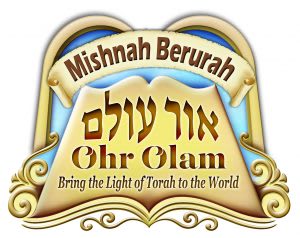Lighting Yom Tov Candles

Question: Should the berachah over lighting Yom Tov candles be recited before or after lighting them?
Discussion: With regard to Shabbos candles, the common custom is to recite the berachah after one has finished lighting the candles.66 This is because of the opinion67 that one accepts Shabbos upon reciting the berachah, which makes it prohibited to light the candles afterwards. The wife of the author of Perishah68 noted that common practice in her day was for women to do the same thing when lighting Yom Tov candles. However, she believed that this was in error for the following reason: Even if a person accepts Yom Tov by reciting the berachah, it is still permitted to light the candles, as hav’arah is permitted on Yom Tov. Thus, there is no reason not to recite the berachah before lighting, and so we should follow the normative principle that a berachah should be recited prior to the performance of a mitzvah (over la’asiyasan). This is Mishnah Berurah’s ruling as well.69 However, some still have the custom of reciting the berachah after lighting, just as they do for Shabbos. This custom, which also has legitimate sources, assumes that once it has been established to recite the berachah before lighting on Shabbos, we do not differentiate between Yom Tov and Shabbos.70
Note that if, on erev Yom Tov, a woman does recite the berachah before lighting, she should assume that she has accepted Yom Tov, just as that assumption is made when she lights candles before Shabbos.71 She is thus subject to the restrictions that apply to lighting candles on Yom Tov: namely, she may not strike a match or extinguish it. And obviously, she may no longer turn on or off the electric lights.
Question: Should the berachah of Shehecheyanu be recited upon lighting Yom Tov candles?
Discussion: Many women have the custom to recite the berachah of Shehecheyanu when lighting the Yom Tov candles, after reciting the berachah of Lehadlik Ner shel Yom Tov.72 R Ya’akov Emden73 expresses bewilderment at this practice: It would seem that the optimum time to recite this berachah, for men and women alike, is at Kiddush. Indeed, there seems to be no source for the practice of reciting it upon lighting candles. Nevertheless, R’ Yaakov Emden concludes that in locales where this is the custom, it is not necessary to object to this practice because, essentially, one may fulfill the obligation by reciting Shehecheyanu at any time on Yom Tov. Mishnah Berurah74 cites R’ Emden’s ruling.
If a woman is reciting Kiddush for herself, she should not repeat Shehecheyanu during Kiddush if she had already recited this berachah when lighting the Yom Tov candles. However, if she is hearing Kiddush from her husband or someone else who has not yet recited Shehecheyanu, she may answer Amen to the berachah of Shehecheyanu that he recites in Kiddush.75
Note that if a woman does recite the berachah of Shehecheyanu upon lighting candles, she has accepted Yom Tov, and she may not stipulate to the contrary.76 Therefore, all the restrictions mentioned above concerning lighting candles on Yom Tov apply. On the other hand, if she recites the berachah of Lehadlik Ner before lighting (see above) but will not be reciting Shehecheyanu, she may stipulate that she is not yet accepting Yom Tov if there is a pressing reason.
Question: If someone is using a floating wick, is there any problem with inserting the wick into the hole of the cork disc on Yom Tov?
Discussion: Many Poskim rule that inserting the wick into the hole of the disc is not considered melachah in any way and is permitted. However, some consider this tikkun mana (fixing a utensil) and prohibit it.77
Another possible concern is that the pieces of cork sometimes do not come fully finished. Sometimes they are not completely detached from one another, or the hole has not been fully punctured. It is prohibited to separate the discs or finish the hole on Yom Tov. Therefore, in deference to the stringent opinion, and due to these other factors, one should puncture the discs (such as by inserting the wicks) before Yom Tov.
Bottles of oil should also be opened before Yom Tov, as opening the seals of such a bottle on Yom Tov usually involves melachah.78
66 See Rema to 263:5.
67 See Rema ibid. 10, and Mishnah Berurah, note 27 ad loc.
68 Preface, ibid.
69 Ibid.
70 This is the ruling of Magen Avraham 263:12, Shulchan Aruch Harav 263:8, and Kitzur Shulchan Aruch 75:4.
71 Beiur Halacha 527:1, ד"ה ספק חשכה, deliberates whether or not a woman is assumed to accept Yom Tov upon herself when lighting the Yom Tov candles before Yom Tov, as is the case with the Shabbos candles. He concludes that one should preferably act stringently.
72 See Halichos Shlomo II:9, footnote 149, and Chut Shani, Rosh Hashanah, page 412, for explanation of why this is not considered an interruption between the berachah of Lehadlik Ner shel Yom Tov and the lighting of the candles.
73 Sheilas Ya’avetz I:107.
74 263, note 23. The inference is that, ideally, one should not do so. However, Chut Shani ibid. writes that from Mishnah Berurah 600, note 4, it can be inferred that this is indeed the accepted practice.
75 Igros Moshe IV:21:9 and 101; Halichos Shlomo II:9:22; Minchas Shlomo II:58:2; Chut Shani, Shabbos IV, page 110. Cf. He’aros to Pesachim 54a, where it is reported that R’ Yosef Shalom Elyashiv ruled that she should not answer Amen unless the berachah is also referring to some special mitzvah that is performed that night (e.g., on the first night of Pesach).
76 Pri Yitzchak II:9; Shemiras Shabbos Kehilchasah 43:23.
77 See Yom Tov Kehilchaso 11, footnote 2.
78 Bottles of oil are sealed with a tamper-proof seal. This seal is made in various ways; breaking it usually entails some melachah.
